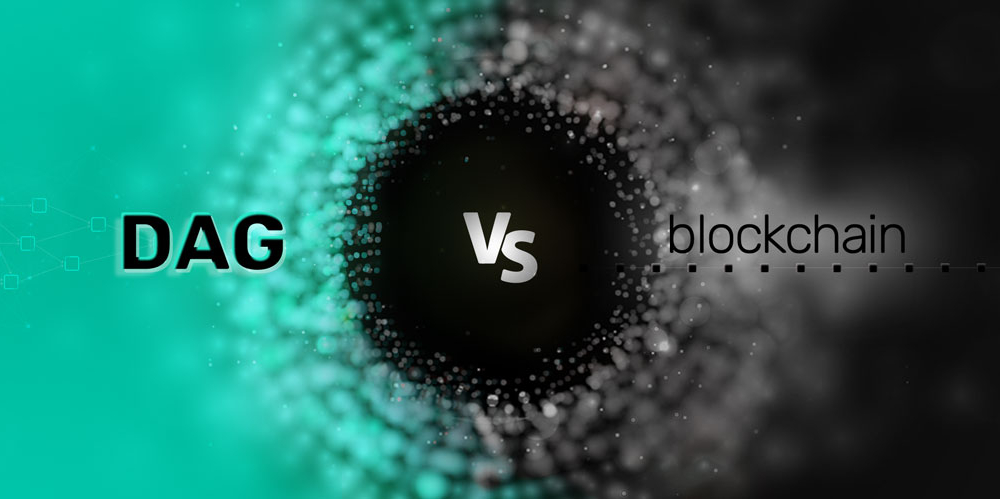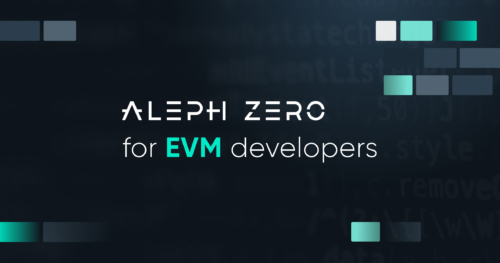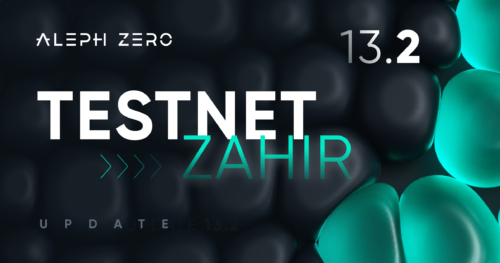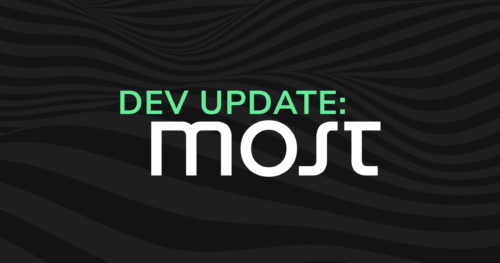DAG vs. Blockchain: They Are Not as Different as You Think.
Sep 19, 2019

Have you heard about DAG protocols? Some say that they are the next level for blockchain. They’ll solve all of blockchain’s shortcomings and allow for mass adoption. But what are they, actually? And why can they be better?
First things first, to get a better understanding of the whole space, let’s take a closer look at what blockchain is and what it isn’t.
Blockchain came out in 2008, right after the global financial crisis. It started as a 9-page white paper named Bitcoin: A Peer-to-Peer Electronic Cash System. A few months later, the first Bitcoin had been mined by the mysterious Satoshi Nakamoto. About a week later, the first transaction had been made–Satoshi sent 10 BTC to Hal Finney, the creator of a system called “Reusable Proof of Work”.
But in the original Bitcoin paper, “block” and “chain” were separate words. Over time, more and more people merged these two, creating a new word – blockchain. And since Bitcoin and its technology were the first, the original chain of blocks is called – the Blockchain.
Actually, most of such protocols are now called blockchains, but Distributed Ledger Technology is far more accurate and inclusive to the technologies that are emerging, such as DAG protocols.
Many observers believe that DAG protocols are here to lay the real technological foundations for a globally adopted decentralized solutions and have dubbed this innovation “Blockchain 3.0”. What is so different about DAG?
How Blockchain Works

To better understand the differences, let’s first focus on how blockchain technology works.
Blockchain is a ledger. It contains information about transactions between parties, just like any other database.
It gets tricky, however, if you want this database to be immutable to attacks and – most importantly – held in the same state on many devices at the same time.
As a ledger, blockchain carries information similar to “Ann gave X to Brad at 5:34:23 PM on 09/16/19”. Or maybe more like: “X amount of the currency has been transferred from this wallet address to that wallet address at this specific date”. Blockchain is transparent, so everyone can see the history of transactions – it’s just not that obvious what wallet address is connected to whom.
Information about this data transfer is passed to another block, but with a hashcode and nonce that make it impossible to alter – if someone would like to change a record, he would have to change every previous one accordingly. Every record is dependent on the previous one, forming a chain.
A large enough number of records is formed into a block. In Proof of Work consensus algorithms (like Bitcoin), the blocks are agreed upon (created) by miners that solve specific cryptographic riddles. All computers in the network are nodes – they hold the exact same copy of blockchain. The nodes have to agree upon a transaction; if the majority of them agrees, it is recorded. As a Proof of Work they create the hash code that is written into the transaction.
Similarly to what happens inside the blocks, each block has its own hash that is dependent on the previous one.
Decentralization is essential to most blockchains – the more users there are in the ecosystem, the safer the network gets. But we’ll tackle that later on.
What is a DAG?

The acronym “DAG” stands for Directed Acyclic Graph. Although it is relatively new to the blockchain sphere, it is quite a common structure in computer science and mathematics.
The name tells you a lot – a DAG is a graph that has a direction and doesn’t have any cycles. You can think of it as an intermediate in the process of creating a blockchain – some of its blocks are already connected with an edge (and hence ordered), but some are not. Additional effort is required to construct a final chain based on a DAG, and that is exactly what the DAG-based consensus protocol is needed for.
DAG vs Blockchain: Technical Differences
Why did I explain how blockchain works and then introduce DAGs? Because many observers and especially DAG supporters think that this is the real blockchain 3.0. That it’s the natural way for blockchain to elevate and move closer to mainstream adoption.
But technically, they are not that different. If you were to visualize blockchain and Aleph Zero, you’d see both as chains of blocks. It’s because in both protocols the chain of transactions is the desired result.
The difference lies inside the blocks. We say that in Aleph Zero, there’s a DAG-based Proof-of-Stake consensus protocol. In blockchain, it is called Nakamoto consensus, and it’s based on Proof of Work.
Proof of Work adds latency to the network in order to ensure it is synchronized and resilient to most attacks. But usually in a DAG-based protocol, this energy-consumption-heavy computing is completely unnecessary. The new transactions are validated by the previous ones. No mining is required.
What Are the Benefits of DAG?
A DAG protocol like Aleph Zero has many advantages over traditional, PoW blockchain. It produces the consensus much faster than a blockchain, and thanks to that, it is able to maintain high transaction speeds when operating on a high scale, something that Bitcoin’s blockchain could not achieve.
For example, Aleph Zero’s proof-of-concept protocol has reached 100,000 Tx/s on a test network of 128 nodes. This is the power of a DAG at its best.

The second benefit is that DAG utilization can be mining-free. With such an architecture, without mining fees and miners to validate the transactions, the transactions can be much cheaper, or even marginal or free. That’s why DAGs have been identified as suitable for IoT applications.
But this also points us to a real-world usable currency held on DAGs. You wouldn’t want to pay, say, a $0.50 blockchain transaction fee for a $0.90 cola, would you? But you would want to pay the usual 0.0004 BTC (about $4) to transfer a couple of million dollars secure and fast. If we were to use crypto as a currency for small, everyday payments, DAG seems to be the tech to use.
What are potential challenges with DAGs? They tend to be less decentralized than blockchains, especially THE blockchain. Many DAG projects approach the (de)centralization problem differently. For example, Hashgraph uses a committee of 39 nodes run by global corporations. Is this truly decentralized? We’d argue that it is not, but for the problems and use cases that they are aiming to solve, this seems enough.
Usually, it’s not easy to decentralize DAG to the same level as blockchain. In Aleph Zero, we are implementing a mechanism that chooses rotating committee members randomly (in the test net we are usually using 128 nodes, but we are aiming for a much higher number).
The security of many DLTs is dependent on how well-spread the network is – the more nodes there are, the harder it is to control the network. Bitcoin or Ethereum are yet unbeatable at that, and there are no signs of changing this status. And still, Bitcoin’s mining is not as decentralized as one would hope, as there are only a few major mining pools that are responsible for validating the transactions of the whole network. Don’t worry; it’s not that they “control” the network. The current situation is just not aligned with the idea of Bitcoin (but it is aligned with the rules of capitalism).
In Aleph Zero, although it is a DAG, we believe we have found a satisfying solution to the decentralization problem. You can read about our ideas on arXiv.
Will DAG Replace Blockchain?
The discussion around DAG and blockchain is increasing in intensity, speculation, and reach. Yes, DAGs can solve most of blockchain’s issues, but Bitcoin’s blockchain is the oldest, the biggest, and, therefore, the most decentralized DLT out there.
On the other hand, the whole DLT space right now, based on market size, is only as big as a large corporation like PepsiCo. Until blockchain really goes mainstream and as an industry grows two or three times its current size, we can’t be sure if 10 years from now Bitcoin’s blockchain will still be the #1 crypto technology in the world.
But now? There’s plenty of room for different Distributed Ledger Technologies. It’s more a matter of use cases and whether blockchain or DAG suits them more. For example, you’d use DAG to let IoT devices perform micropayments on their own as in these protocols the , but if you were to transfer large amounts of money, you’d likely prefer to Bitcoin (blockchain).
Our vision is an ecosystem in which you can use the DLTs that suit your business needs but that are interconnected at the same time. You could choose private or public, leaderless or leader-based, DAG or blockchain, and while achieving your business goals, you could stay connected to the global ecosystem that provides security and transparency.


